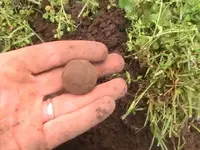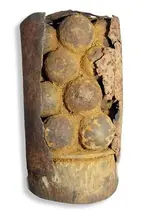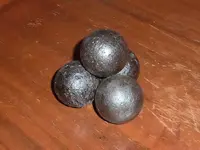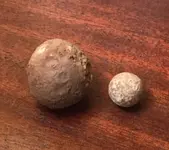Olekyground wrote:
> Found this today while detecting.
> I figured it may be a small cannon ball? Im not sure.
> I think it also could be a bearing maybe.
You're right, it could be an artillery relic, or it could be one of the millions of ball-bearings and other NON-ARTILLERY iron balls used for Industrial purposes.
If you want to know for CERTAIN whether your iron ball is an artillery ball, you'll need to claen the rust-crust off, and measure its diameter extra-precisely with digital calipers. Fortunately for us cannonball collectors, we have access to a Historical document which tells the precise diameter (and weight) of the cannon balls, grapeshot-balls, and canister-balls used in America from the Colonial era through the Civil War era. You can view that Historical artillery ball size-data online, for free, at
www.civilwarartillery.com/shottables.htm
After you remove the rust-crust from the iron ball you found, if its exactly-measured diameter does not match up PRECISELY with any of the artillery ball diameters listed in the Historical Artillery Ammunition document, your ball is not an artillery ball.
More info for you:
As Duggap mentioned, your iron ball is too small to be a cannonball or a grapeshot-ball. The only artillery balls which were about the size of your ball are Canister-balls. As you see in CSA2K's photo, Canister was like "shotgun" ammo for cannons.
Another factor to consider: Is there any record of Military cannon usage in the area where you found the ball? If not, the ball is highly unlikely to be an artillery ball. Good luck to you. I hope for your sake it is indeed an artillery ball.








